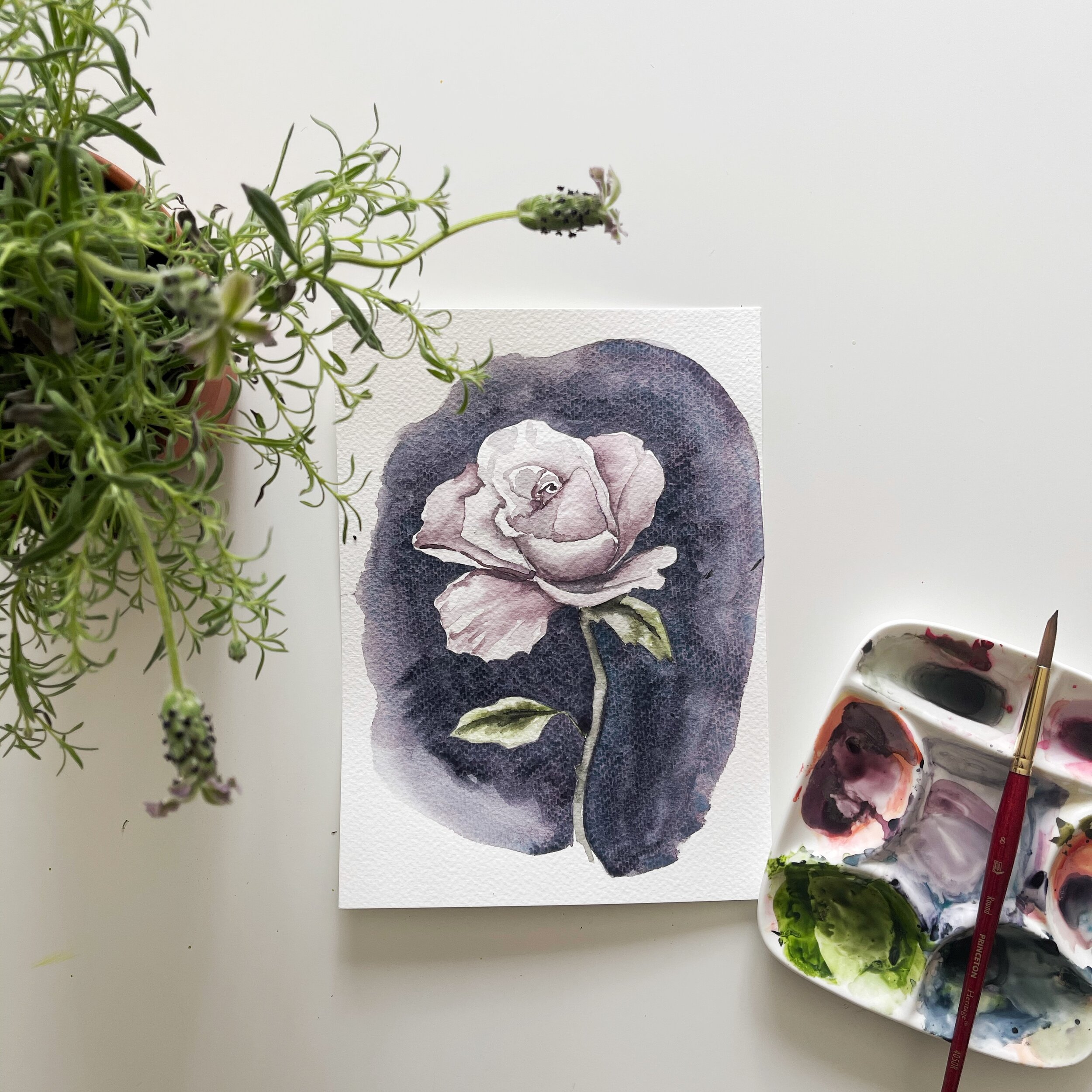What are the different types of Watercolour Paint & When to Use Them?!
Watercolour painting is a captivating art form that you can learn through participating in Nicki’s classes or watching her tutorials on YouTube. However, you’ve clicked on this post as you want to learn the basics before you tackle watercolour yourself. Understanding the various types of watercolour paint and how to use them can open you up to a world of infinite possibilities. In this blog post, we will explore the different types of watercolour paint available and provide tips on how to make the most of each one.
Tube Watercolours
Tube watercolours are by far the most commonly used form of watercolour paint. They come in soft, squeezable tubes and are offered in a wide range of colours. To use tube watercolours, squeeze a small amount onto a palette or mixing surface, and dilute it with water to achieve the desired transparency.
This type of watercolour paint is ideal for controlled brushwork, detailed paintings, and achieving intense colours. It allows for precise colour mixing, and its thick consistency allows for layering and blending. It’s definitely the easiest form to utilize for beginners and I know it’s one of Nicki’s favorites too.
Pan Watercolours
Pan watercolours, also known as cake watercolours, come in solid form and are housed in individual compartments within a palette. They are activated by adding water with a brush. Pan watercolours are perfect for artists on the go due to their portability.
Using them is pretty easy as all you need to do is wet the brush and pick up your favourite colour from the pan, followed by a quick application to paper. Pan watercolours are great for quick sketches, plein air painting, and creating washes. They offer convenience and are easily reactivated by adding water when they dry out.
Liquid Watercolours
If mixing seems a bit intimidating, take a look at liquid watercolours. These come pre-mixed, saving you the hassle of mixing them with water. They are highly pigmented and offer intense colours. Liquid watercolours are versatile and can be used for both fine art and crafts. They’re used best when simply applied to a palette and diluted with water as needed. It’s better to start with a small amount of water, and slowly add from there.
They are particularly suitable for large-scale paintings, washes, and backgrounds. Liquid watercolours can also be used in mixed media art, calligraphy, and creating unique effects like drips and spatters.
Watercolour pencils and crayons
Watercolour pencils and crayons are solid forms of watercolour paint that allow for precise control and detailing. They resemble regular coloured pencils or crayons but are water-soluble. Imagine if your childhood Crayons grew up a bit!
To use watercolour pencils or crayons, draw directly onto the paper, and then use a wet brush to blend and spread the colours. This technique enables artists to achieve fine lines, intricate details, and vibrant effects. Watercolour pencils and crayons are perfect for botanical illustrations, adding texture, and enhancing mixed media projects.
Each and every form of water colour paint is designed for specific needs. I’d recommend finding a small set of each, and experimenting with them until you’ve found what works best for you. Let us know what form of watercolour you prefer in the comments below.





